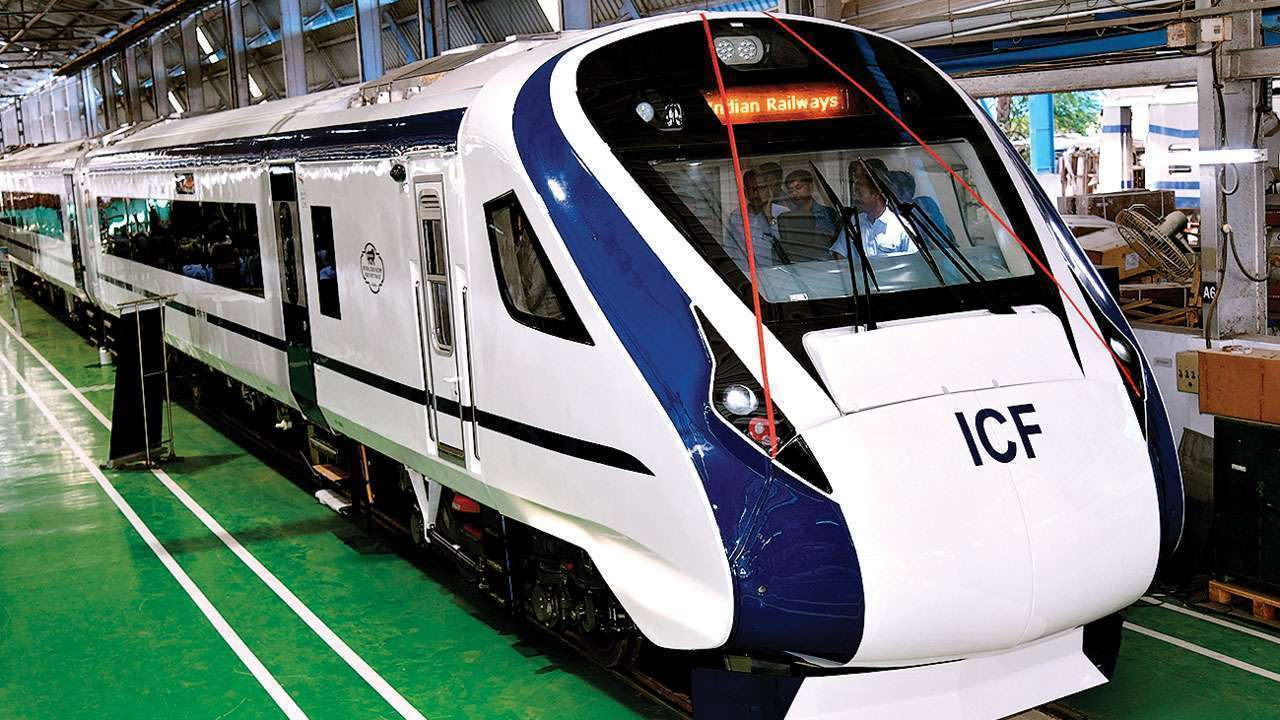Vande Bharat Express connecting Nagpur and Bilaspur flagged off by the Prime Minister
GS Paper-3, Technology
Why in the News?
Recently, the Prime Minister, Shri Narendra Modi flagged off Vande Bharat Express connecting Nagpur and Bilaspur from platform number 1 of the Nagpur Railway Station on 11th Dec 2022.
Vande Bharat
Indian Railways are already running 5 Vande Bharat Express Trains. This will be the 6th Vande Bharat Express and it will cover the distance of 412 km between Nagpur and Bilaspur in 5 hours 20 minutes at an average speed of 77.25 kmph. It will halt at Raipur in between Nagpur and Bilaspur and run 6 days a week, except Saturday. Nagpur, the winter capital of the state of Maharashtra will be connected to Raipur, the capital of Chhatisgarh and Bilaspur, an important city of Chhatisgarh by this Vande Bharat Express.
What are Vande Bharat Trains?
- Since the launch of Rajdhani trains, this semi-high-speed, self-propelled train is being hailed as the Indian Railways’ next significant advancement in terms of speed and passenger convenience.
- The first Vande Bharat was produced at the Integral Coach Factory (ICF), Chennai, for about Rs. 100 crore as part of the “Make in India” programme.
- India’s first effort to implement train set technology in comparison to traditional systems of passenger coaches pulled by individual engines was the Vande Bharat.
- Despite being complex, the train set arrangement is quicker, simpler to maintain, uses less energy, and offers more flexibility in train operation.
- There are currently two Vande Bharat Expresses running between New Delhi and Katra and Varanasi, respectively.
- In order to achieve “greater efficiency” with the 400 new trains, railways are considering manufacturing some of these trainsets out of aluminium rather than steel.
- Each trainset will be 40–80 tonnes lighter than a contemporary Vande Bharat thanks to an aluminium body, which will result in improved speed potential and lower energy use.
What are the Features of the Vande Bharat Trains?
- These trains, which were developed under the name “Train 18,” run without a locomotive and are powered by a distributed traction power technology that powers each of the train’s cars individually.
- Its coaches include amenities for passengers like WiFi on board, GPS-based passenger information systems, CCTVs, automated doors in every coach, spinning chairs, and bio-vacuum toilets similar to those used in aeroplanes.
- Due to quicker acceleration and deceleration, it can travel at a maximum speed of 160 kmph, cutting the travel time by 25% to 45%.
- It is cost-, energy-, and environment-efficient because it also boasts a sophisticated braking system with power regeneration.
What is the Significance?
- The production of 400 of these trainset accessories will result in the creation of an extra 10,000–15,000 jobs over the course of three years.
- The country’s rolling stock industry would get an investment of roughly Rs 50,000 crore, which will greatly benefit the supply and component manufacturing industries, among others.
- Additionally, it will boost railroad budgets and productivity.
Way Forward
- With enhanced next-generation trains, Indian Railways ushered into a new era of travel. The new trains can assist railways in maintaining and even increasing traffic at a time when low-cost airlines and efficient road networks pose fierce competition.
The success of the Vande Bharat project would be greatly increased by timely completion of the ambitious project and consideration of the need for various classes of travel.




